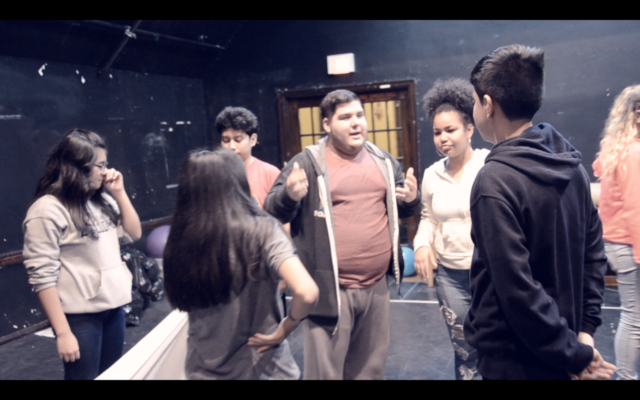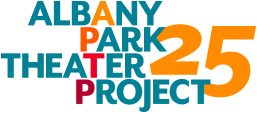Since early February, I have been co-teaching a theater and writing course at Stateville, a maximum-security prison located just outside Joliet, Illinois, through the Prison + Neighborhood Arts Project. In this course, the dozen or so students explore voice, body, and spirit through many of the same exercises done with the teenaged ensemble at Albany Park Theater Project. During one session, students discussed the inability to create a visual and sonic record of the performance art they were creating. As one student said, “I wish we could camcord this.” Recording devices are not allowed in the prison. That same student then made the suggestion that each week a student ought to write down the events of the previous class to document not only the activities, but the impact it had on them and their peers. More than a journal entry, this writing would be the film, the photograph, the audio file, and the documentary they wished they had. These students do work and want the world to know it. Learn more about their work below in the words of students Devon Terrell and Darrell Fair:
DEVON TERRELL
Take 9 men. Sit them on a carpeted floor in a circle. Have them close their eyes and breathe. Inhale. Exhale. Now ask these men when they feel a tap on the left shoulder to make a melody or beat. And if they feel a tap on the right shoulder, say a word or a phrase. All while keeping their eyes closed. These individual men, with their own identities, with their own stories to tell, harmonized these sounds together and became an organic orchestra. Free from the technicalities and precision of a practiced musician, these men made beautiful music that sadly will never be heard again.
Take these 9 men and ask these men to creatively describe the ingredients that make them into who they are as if it were a dish to be served. You’ll hear the combination of books, movies, music. The families, the hurt and pain. The stories of hopes and dreams all baked, grilled, and fried into a platter of creative expression.
“Who are these men? Fathers, sons, brothers, uncles. Who are these men? Leaders, activists, humanitarians, philanthropists. Who are these men? United States citizens residing in the Illinois Department of Corrections.”
Still, take these 9 men and place them into groups and ask them to collectively create a moving scene that expresses the idea of the recipe that made them. There was one lying on the floor as if he was sleeping, dreaming. As he laid there, he tossed balled-up pieces of paper from his head as if they were his hopes and ideas. Then came a dream collector who gathered all these dreams and tossed them into the heavens.
Who are these men? They are participants in the Albany Park Theater workshop instructed by two fun creative characters, Benjamin and David. These geniuses began the process of turning tough, rigid, stiff-bodied men into fluid, flowing, spontaneous movements of ideas.
Who are these men? Fathers, sons, brothers, uncles. Who are these men? Leaders, activists, humanitarians, philanthropists. Who are these men? United States citizens residing in the Illinois Department of Corrections. Young and old. Men who have served 12 to 30 years in prison. Men who lost hope and regained it again and again.
Through these projects: Prison + Neighborhood Arts Project and Albany Park Theater Project, Benjamin this workshop of theater and writing has been therapeutic, fun, creative, and always exciting.

APTP ensemble members devising performances based on a rewrite of "The Three Little Pigs" by a student from Stateville.
DARRELL FAIR
Today’s class started with the addition of a new member, “Charles.” He was warmly initiated to the group with a few rounds of Zip Zap Zop, which quickly progressed to the numbers round which reached a new high for the class of 37.
Benjamin proceeded to surprise the class with a CD of a special performance by the students from the arts ensemble from Albany Park Theater Project. To each of our amazement, the students performed an improvisational performance of the Three Lil Pigs rewrite by our very own Malik. Malik was more surprised and honored than the rest of us because for the first time that I can remember, he was at a loss for words.
The students implemented non-verbal, sculptural, sound and movement collaborations to tell the story. I’m sure I speak on behalf of the entire class when I say that this has been one of the most powerful, moving classes that we’ve had. This is the essence of social-aliveness. Just seeing our thoughts, ideas, & efforts come to life right before our eyes—acted out and performed by the talented Albany Park ensemble was amazing! It made me feel connected, relevant, and alive. These students did an incredible job. The Albany Park viewing was followed by “Follow the Leader” in groups of two, where one partner led his blind partner with sound. That exercise was followed by a lesson and exercise of three-line improv—where the lead partner assumed a pose followed by the first line delivery by his partner, then a response from the partner in a pose, and the third and last line from the standing partner. For some reason, this three-line improv and the machine movement—which I’ll discuss next—both seemed a bit more energized and uninhibited, maybe it’s because we’re all gaining confidence in our ability to use our voice, body, and movements to convey emotion or, on the other hand, maybe it was us watching that “fearless” performance by the students from Albany Park—they were confident and bad with no fear at all of really getting into the characters.
“This is the essence of social-aliveness.”
So, we wrapped up class with a new exercise in machine movement—which the Albany Park students demonstrated. The machine movement exercise was a collaboration of each of our independent movements joined together in a fluid, machine-like movement based on representations of a given theme. Our theme was Justice, and what does it look and/or sound like. Raphael, with outstretched arms bent downward at the elbows, represented the unbalanced scales of justice balanced across his shoulders. D-Boy’s movement represented the weight and burden of Justice on his back. Lil B demonstrated the financial corruption behind the fight for Justice. Malik added vocals to express the sounds of anguish, pain, and suffering associated in the fight for Justice. Razi also added sound and voice to capture the emotion in the fight for Justice. Rodney added prayers to capture what strengthens so many of us during this quest for Justice—a belief in a higher power, a better tomorrow, and an eventual answer to our prayers. I contributed the movement of a swinging pendulum that represented the arc of Justice, and the fact that it always eventually swings toward righteousness.
 Menu
Menu
